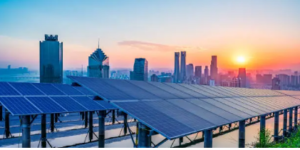Solar energy can play a decisive role in helping us reduce our dependence on fossil fuels and prevent the release of harmful gases into the atmosphere. Global warming poses a grave threat, so humans must do what they can to mitigate its impacts.
 Numerous factors influence the performance of Australian made solar panels, including their efficiency level, degradation rate and durability. These can all affect your average kilowatt-hour consumption and power generation.
Numerous factors influence the performance of Australian made solar panels, including their efficiency level, degradation rate and durability. These can all affect your average kilowatt-hour consumption and power generation.
The Basics
Australian made solar panels are comprised of individual solar cells arranged into modules. While each cell produces only a few watts on its own, combined into larger arrays or panels, they have much greater power than individuals could have alone.
There are two primary solar panel technologies: monocrystalline and polycrystalline. Mono cells, made of pure silicon cast into ingots and then thin-sliced, offer greater efficiencies (up to 23%) than their poly counterparts, which may cost less and take up less space.
Non-silicon solar cells made of materials like cadmium telluride and gallium arsenide offer additional solutions. However, their efficiency may not match silicon cells; they provide greater climate flexibility and installation ease compared with silicon alternatives. Amorphous silicon and other thin-film options may also exist but are not cost-effective solutions. A battery-backed inverter converts low-voltage, high-current DC power from PV modules into 120VAC electricity to power homes and businesses.
Benefits
Solar panels allow us to harness more sunlight that hits Earth each day than we could ever consume in one year and use it. By harnessing this power and harnessing it for ourselves, solar panels help reduce pollution caused by traditional electricity generation methods, creating a cleaner world for future generations.
Solar energy offers an excellent way to save money over time, particularly with net metering in place. While you will still rely on the grid for power during cloudy or nighttime conditions, solar panels can significantly lower energy bills and your bills overall.
Clean your solar panels regularly to remove dust, bird droppings and other debris, including snow buildup during winter, which could reduce energy output. Furthermore, monitoring them frequently is crucial to detect performance trends or issues through an intuitive, user-friendly interface that displays and stores this data.
Installation
After the solar cells are coated with phosphorus and assembled with metal connectors, metal pins are attached to each cell so they may link. After installing back sheets and front panels for protection purposes, flash testers verify outputs, efficiencies and any other details listed on technical specification sheets.
Once all permits have been acquired, installation can commence. Depending on your chosen system and the physical size of the house, installation could take anywhere between one to three days.
Installers begin by disconnecting your home’s electricity and installing wiring to connect solar panels with an energy inverter. This inverter converts DC electricity produced by your solar panels into AC electricity suitable for household appliances and utilities. An energy meter is also installed to monitor how much solar power your household has or uses.
Maintenance
Once solar panels are in place, they require minimal upkeep. Most commonly, they should only require biannual cleanings to prevent too much dirt and dust build-up; cleaning procedures often consist of spraying them down with a hose or wiping them clean with non-abrasive cloth – however, this depends on their type and manufacturer; please read your system’s manual to learn what cleaning procedures they recommend.
Reputable Australian made solar panels companies also provide routine inspections that help detect problems like critter nests or damaged wires before they lead to system failure, and these inspections should usually be covered under your warranty agreement. But remember, warranties only have value if the company backing them is still operational when you need help!
Once the solar panel is assembled, it undergoes rigorous testing to ensure that it can stand up to extreme weather conditions and normal wear and tear. Any defective solar panels are discarded. The final step is to give the solar panel a quality check before it is packaged and shipped out for installation.
Comments are closed, but trackbacks and pingbacks are open.